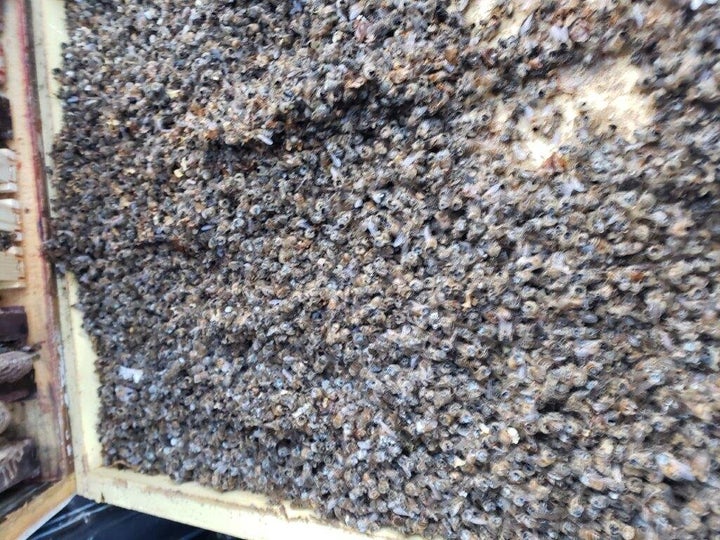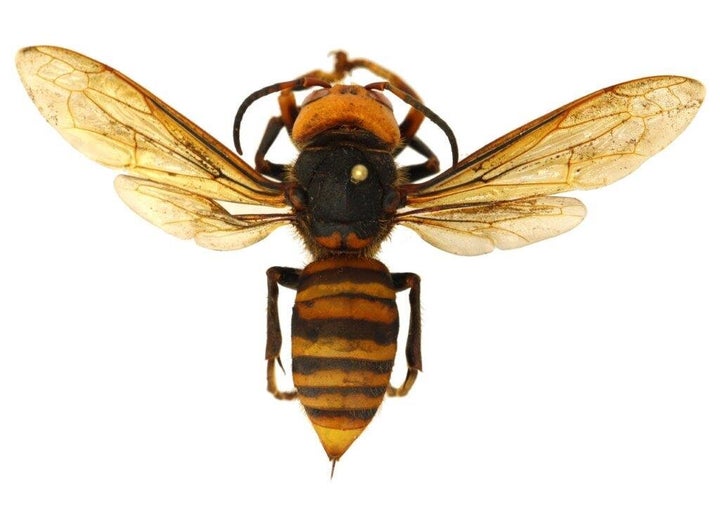Another day, another story that really starts to feel like 2020 is a year that just really has an axe to grind with humanity as a whole.
Asian giant hornets, which have been not-so-fondly dubbed murder hornets, have made their way to North America. They were discovered in British Columbia last summer but there’s growing concern the insects are establishing themselves in the U.S. and Canada.
“They’re like something out of a monster cartoon with this huge yellow-orange face,” said Susan Cobey, a bee breeder in the entomology department of Washington State University (WSU), in an April news release.
Officials in B.C. issued a warning in March about the winter-hibernating hornets appearing this spring and summer after some were found in White Rock, B.C. as well as neighbouring Washington state late last year.
“The Asian giant hornet is classified as a serious honeybee predator. Asian giant hornets hunt insects for food and generally are not interested in humans, pets and livestock. When their nest is disturbed, they will attack with painful stings, which can be hazardous to people’s health,” a provincial bulletin reads.

The hornets have killed as many as 50 people a year in Japan. Multiple stings — which can pierce normal beekeeping suits — are venomous enough to be fatal to humans.
The insects were first discovered B.C. in August 2019 — thought to have stowed away on a ship from Asia — and a group of beekeepers on Vancouver Island had to eradicate a large nest of the hornets the following month, reported CTV News.
The queens of this species can grow over five centimetres long, while other hornets are usually around 3.5 centimetres.
“It’s a shockingly large hornet,” said Todd Murray, WSU’s extension entomologist and invasive species specialist. “It’s a health hazard, and more importantly, a significant predator of honey bees.”
The “murder hornets” invade hives and decapitate all the bees inside in a matter of hours. Scientists worry if they gain a foothold in North America, they’ll decimate already fragile bee populations, which in turn will affect food crop production. As the largest hornets in the world, they feed exclusively on other insects.

The New York Times reported about the hornets on Saturday that shared graphic details of the piles of honeybee corpses left behind after murder hornets infiltrated their hives.
It’s unclear how they first got to North America, but WSU’s news release stated that “insects are frequently transported in international cargo and are sometimes transported deliberately.”

Native to east and southeast Asia, the hornets are not particularly aggressive towards people, but like other types of hornets, they will attack if they’re being bothered. People who have been stung describe it as being stabbed with “red-hot thumbtacks,” according to the Times.
If spotted in B.C., the sighting should be reported to the province’s Invasive Species Council either by phone or online.